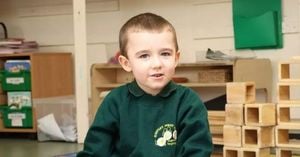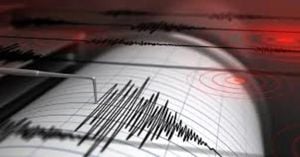YouTube, the world’s largest video-sharing platform, is rewriting the rules for creators who once found themselves permanently banished. On October 9, 2025, the Google-owned company officially unveiled its “Second Chance” program, a pilot initiative that lets previously banned creators apply for the opportunity to start fresh with a brand-new channel—though not everyone will be welcomed back with open arms.
The new policy marks a dramatic shift from the platform’s previous stance, which enforced lifetime bans for those found in violation of its Community Guidelines, particularly around contentious topics like COVID-19 and the 2020 U.S. presidential election. As reported by Variety and CNBC, this move comes after years of heated debates over content moderation, accusations of political bias, and mounting pressure from both Republican lawmakers and the Biden administration.
So, what’s changed? Under the new “Second Chance” program, creators whose channels were terminated for violating now-retired policies—such as those targeting COVID-19 or election misinformation—can, after a one-year waiting period, request to return to the platform. The process is not a simple reset: creators must log into YouTube Studio on desktop, where eligible users will soon see an option to request a new channel. But don’t expect to pick up where you left off. According to YouTube’s blog post cited by Mashable, "neither old subscriber lists nor previous content will be carried over to new channels," meaning creators have to rebuild their presence from scratch.
In its announcement, YouTube acknowledged its own evolution over the past two decades, stating, "We know many terminated creators deserve a second chance—YouTube has evolved and changed over the past 20 years, and we’ve had our share of second chances to get things right with our community too." The company emphasized that the new option is separate from the existing appeals process. If a ban appeal is successful, the original channel returns as if nothing happened. If not, the creator can now, after a year, apply for a new channel under the Second Chance program.
But who exactly is eligible? The platform is drawing clear boundaries. Creators terminated for copyright infringement remain permanently barred, as do those found guilty of violating YouTube’s “Creator Responsibility” policies—which include malicious harm, participating in abuse or violence, demonstrating cruelty, or engaging in deceptive behavior that leads to real-world harm. Users who deleted their own channels or Google accounts also won’t be able to apply. As Forbes and Variety both confirm, the reinstatement process involves a careful review by YouTube staff, who will consider the severity and persistence of past violations, any off-platform behavior that could harm the community (like endangering child safety), and whether the actions that led to the ban are still considered against today’s rules.
The program’s rollout follows a period of intense scrutiny. According to CNBC, YouTube’s announcement came just weeks after agreeing to pay $24.5 million to settle a lawsuit filed by former President Donald Trump over his account’s suspension following the January 6, 2021, Capitol riots. The platform has also faced repeated accusations of political bias, with House Republicans and Trump himself alleging that Big Tech companies, including Alphabet and YouTube, have unfairly silenced conservative voices. In September, Alphabet’s legal counsel sent a letter to House Judiciary Chair Jim Jordan (R-Ohio), outlining changes to YouTube’s community guidelines and acknowledging that, in the wake of the pandemic, the Biden administration had pressured the company to remove certain COVID-19-related videos. Alphabet’s lawyers called this pressure "unacceptable and wrong."
As Mashable reports, the pilot program is currently open to a select group of "qualified creators," but YouTube plans to expand access over the coming months. The company’s blog post admitted, "We’ve heard loud and clear from our creator community that they want more options to return to YouTube." However, the company also made it clear that the new program is not a blanket amnesty. Each application will be judged on its own merits, with staff weighing the potential risk to the platform’s community. "We will take multiple factors into consideration, including whether or not the behavior that got the channel banned is still against the rules," YouTube said. "We will also consider how severe or persistent the violations were and whether the creator’s actions harmed or may continue to harm the YouTube community."
For those who do manage to return, the road to monetization is not automatic. Approved creators must reapply for YouTube’s Partner Program if they want to earn revenue from their new channel. This is no small feat: as of 2025, more than 3 million creators are part of YouTube’s monetized creator program, which has paid out over $100 billion in the last four years, according to YouTube’s own data cited in Variety and Mashable. The platform has loosened some of its monetization policies in recent years, relaxing restrictions around profanity, but it has also cracked down on accounts posting AI-generated videos that spread harmful misinformation.
The business of misinformation remains a thorny issue. The Center for Countering Digital Hate reported in 2024 that popular climate change denialists on YouTube are raking in about $13 million per year through ad revenue. Researchers have also found that controversial channels, including those spreading conspiracy theories about public health, climate change, and the electoral process, continue to profit handsomely from YouTube’s vast audience. These channels have played a significant role in shaping political discourse and, according to some analysts, in the radicalization of young male viewers.
All of this is unfolding against the backdrop of a wider shift in content moderation across Big Tech. As Forbes notes, YouTube’s move to offer a second chance fits with a broader trend at Google and other platforms to ease the strict rules imposed during the pandemic and after the 2020 election. In December 2024, YouTube ended its stand-alone COVID misinformation rules, reflecting the evolving landscape of online speech and the challenges of balancing free expression with community safety.
While the Second Chance program is a significant departure from YouTube’s previous policy of lifetime bans, it is not without its critics. Some worry that allowing previously banned creators back could open the door to renewed misinformation or abuse, especially as the platform continues to grapple with the spread of AI-generated content and the persistent influence of controversial figures. Others argue that the move is overdue, providing a fair path for redemption and recognizing that both individuals and institutions can change over time.
As YouTube begins rolling out this initiative, all eyes are on how the company will balance the demands of free speech, political pressure, and community safety in the digital age. For creators seeking redemption, the message is clear: a second act may be possible, but the spotlight comes with strings attached.






